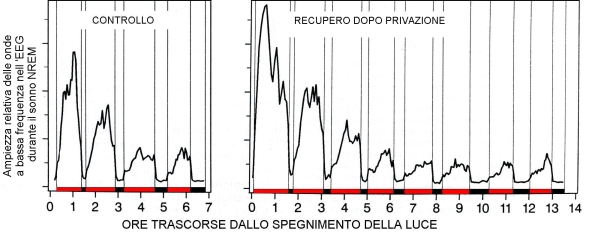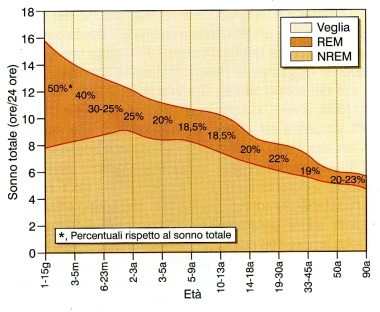Sleep regulation
|
|
The amount of sleep and how it is distributed in terms of stages of
NREM![]() sleep and
REM
sleep and
REM![]() sleep changes over the course of our lives (Fig. 1).
sleep changes over the course of our lives (Fig. 1).
The greatest amount of sleep can be observed in newborn babies.
As the years go by there is a reduction in the amount of REM sleep,
above all.
A regulating mechanism tends to keep the length and depth of sleep
constant. In fact, sleep deprivation then leads to a catching up on lost
sleep. Fig. 2 shows that this catching up manifests itself through an
increase not only in the total daily duration of sleep and its NREM stages
(in red) and REM stages (in black) shown on the time lines, but also in depth,
seen in the intensification of low frequency waves on the
electroencephalogram![]() during NREM stages.
during NREM stages.

Fig. 2:
Hours spent sleeping in normal conditions (Control) and after keeping the
subject awake all night and all the next day (Catching up). Time spent in
NREM sleep is shown in red, time spent in REM sleep in black. The line
shows the relative width of the low frequency waves of the EEG during the
various stages of NREM sleep
(Credit:
Amended from
A.A.Borbely. Sleep homeostasis and models of sleep
regulation.
In "Principles and practice of sleep medicine". Saunders 1994)
